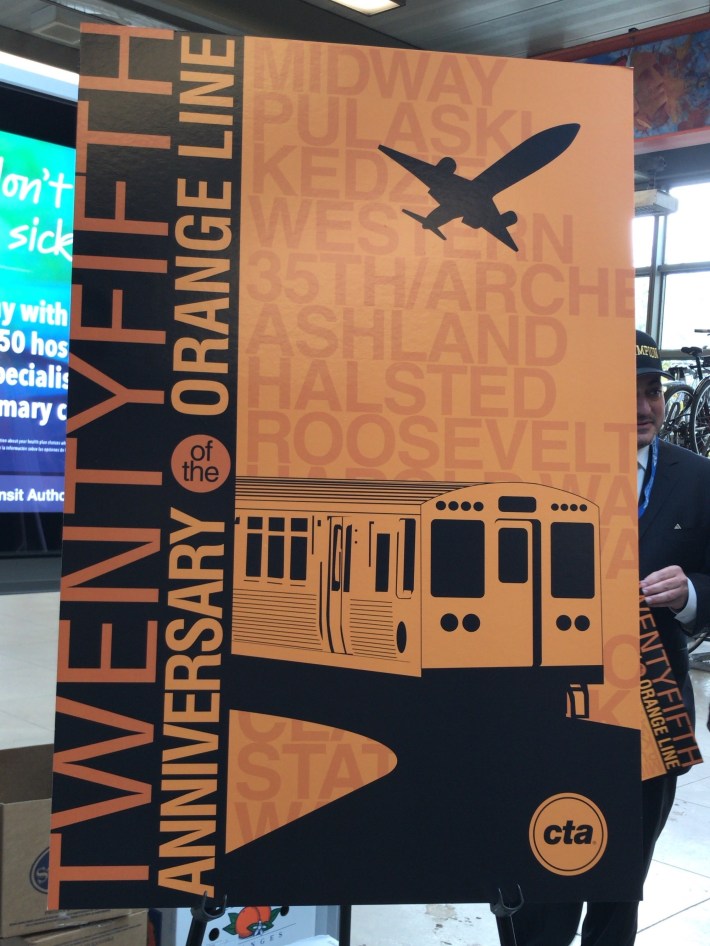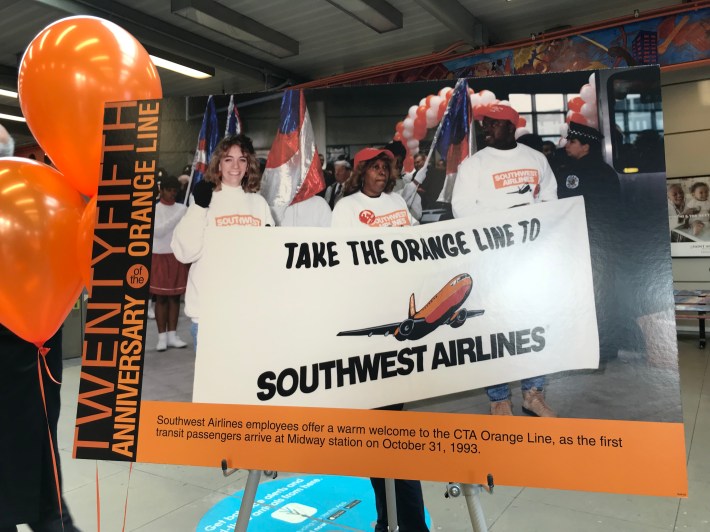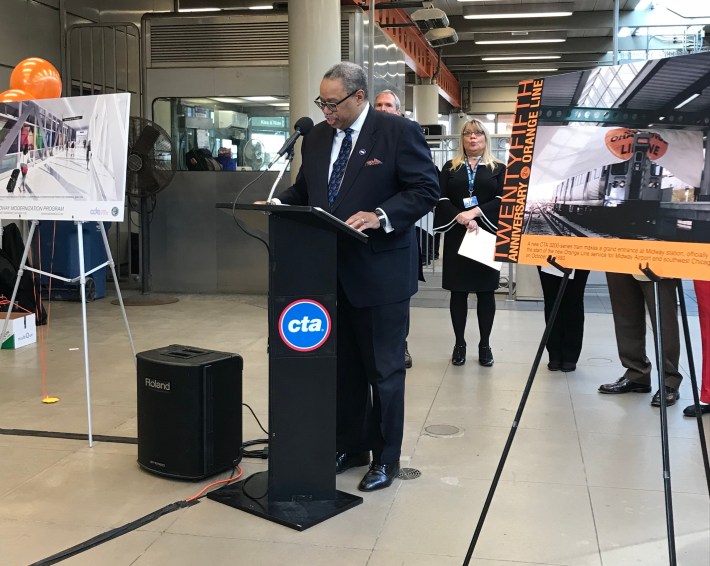When I entered the Midway Orange Line Station this morning, someone offered me a free orange. I can safely say no one has offered me citrus on the train before, but this was no ordinary day.
The Chicago Transit Authority was marking the 25th anniversary of the opening of Orange Line service to Midway Airport. Southwest Airlines provided complimentary oranges to mark the occasion and the Chicago Transit Authority handed out commemorative posters.
CTA president Dorval Carter, Jr. kicked off the celebration with remarks marking the occasion. “We are very particular about the station today for two important reasons," he said. "We wanted to acknowledge the vital role the Orange Line played in the growth and economic development of Chicago’s Southwest Side,” he said. “And second, the opening of the Orange Line 25 years established Chicago as the only American city to have rapid transit links to two major airport hubs.”
Carter discussed another 1993 CTA milestone, the designation of color-coded rail lines replacing the previous system of naming the routes after the destinations they serve or streets they follow. He said the goal was to make rapid transit more user-friendly for occasional or new riders, visitors, and commuters who spoke English as a second language. The Orange Line opened on Halloween 1993, which he noted was appropriate due to the route's jack-o'-lantern-like color scheme.
“Frankly, the new 13-mile rail service for the Southwest Side of Chicago was decades overdue by 1993,” Carter said. “For fifty years, [due to] various funding shortages and other issues, the citizens of the Southwest Side waited to get rapid rail service.”
Carter said that in 1986 President Ronald Reagan worked out a funding deal with Mayor Harold Washington as a political favor to Illinois congressman Bill Lipinski for casting a vote for Reagan’s plan to send military aid to the Nicaraguan Contras, right-wing rebels fighting to overthrow the socialist Sandinista government. Planning subsequently got underway for what was then called Southwest Transit Project, which eventually became known as the Orange Line.

Current congressman Dan Lipinski, Bill's son, then discussed some of the significance of the Orange Line and public transit on the Southwest Side. “I grew up two miles west of here,” he said. “I remember what Midway was like -- the airport was almost dead. It starting coming back, but it was really the Orange Line that did it.”
“As someone who was waiting for rapid transit to come in the '80s, I took the 62 bus down Archer Avenue, then took the 99 bus that used to get onto the Stevenson at Pulaski or Cicero to get downtown,” Lipinski recalled. He said he would take public transit to go to high school and to get to summer jobs, always wishing there was a rapid transit line. “I missed the time of having it here. I know how important it is and how much it’s meant to the area, to the community, all the communities in the southwest side.”
Jamie Rhee, commissioner of the Chicago Department of Aviation, said that the Midway Orange Line put Chicago on the map as one of the few cities with rapid transit access to two major airports. “It’s these train lines that are connecting Chicago’s airports to all of Chicago’s 77 community areas,” she said.
Rhee then spoke about the Midway Modernization Project, particularly the complete makeover coming to the pedestrian bridge that connects the Orange Line station to the terminal. According to Rhee, in 2017 alone, 2.7 million people rode the orange line to and from Midway to travel for work or for pleasure.

Perhaps Patty Greene, manager of community affairs and grassroots at Southwest Airlines said it best. “Orange you glad you rode the Orange Line to Midway?"
![]()
Did you appreciate this post? Consider making a donation through our PublicGood site.





